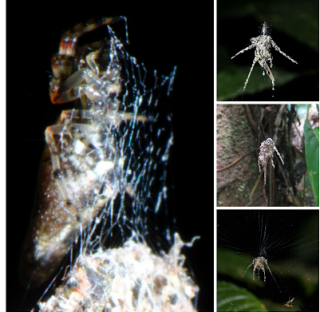Personality
Spider Builds Complex Lifelike Replica Decoys Outside Web
A spider living in the Peruvian Amazon constructs decoys to scare off predators
Posted December 20, 2012
Spiders are amazing animals. Recently I wrote about a rare and endangered spider called the Braken Bat Cave meshweaver whose presence stopped the construction of a highway underpass project in San Antonio, Texas. In this essay I noted that researchers have described play in spiders and how it is influenced by the personality of the individual and about spiders who belong to the genus of jumping spiders called Portia who change their behavior depending on the behavior of their prey. These spiders show complex predatory strategies that involve problem solving and future planning despite having a small brain.
Spider art as deception
Now we've learned there is a spider who is a member of the genus Cyclosa (and perhaps even a new species) living in the Peruvian Amazon, who builds complex lifelike decoys of itself (see also and), apparently to confuse or to distract potential predators. While trekking through the Amazon, scientist and educator Phil Torres spotted this spider "perched above an intricate, lifelike replica of itself constructed from leaves, dead bugs parts, and other scraps ...The spiders arrange debris among specialized silk strands called stabilimenta in a symmetrical form that makes it look almost like a larger spider hanging in the web."
It turns out that some members of this genus who build deceptive little balls in their web that look like tasty egg sacs have a higher survival rate than other spiders who don't against predators such as paper wasps because the wasps wind up attacking the false egg sacs. However, no one has ever observed debris that includes legs and a torso and we still don't know if this perhaps new species of Cyclosa benefits from having evolved such an artistic talent. It's difficult to imagine there aren't any survival benefits.

The actual spider (left) and examples of the constructed, false spiders (right). Images by Jeff Cremer and Phil Torres.
People also wonder if this spider has to have some degree of self-awareness to be able to create an image of itself. We don't know yet but let's keep the door open and hope that scientists can come up with tests similar to those that are used on other animals to study self-awareness.
Stay tuned for more about the fascinating and surprising lives of animals.
The picture above and the teaser image can be seen here.


